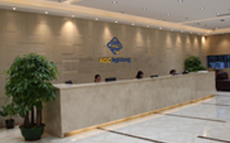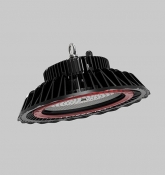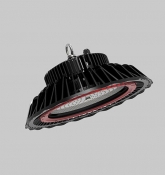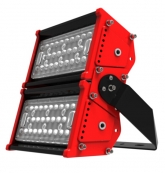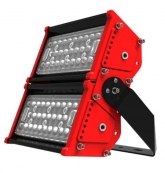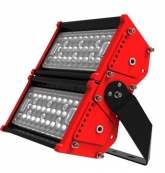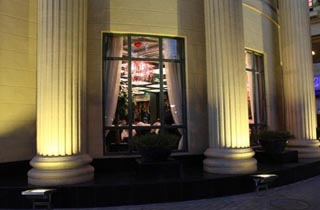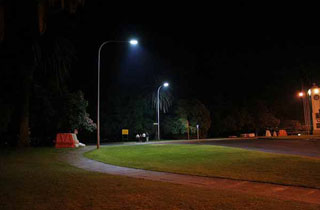Mobile

AGC Lighting mobile phones
official website
Step one: Using a smart phone to install scanning code software, such as "wochacha", "Win on Quick Code” etc.
Step two: Open the scanning code software against the QR code, then you can get an interlinkage.
Step three: open the link, and then enter AGC Lighting Mobile Phone Official Website.
Scanning the QR code, you can land the mobile phone website




Intellectual Property
Intellectual Property
Intellectual property refers to creations of the mind: inventions, literary and artistic works, and symbols, names, images, and designs used in commerce. In accordance with the Convention Establishing the World Intellectual Property Organization, intellectual property includes literary, artistic and scientific works; performances of performing artists, photograms, and broadcasts; inventions in all fields of human endeavor; scientific discoveries; industrial designs; trademarks, service marks, and commercial names and designations; protection against unfair competition; and all other rights resulting from creations of the mind in industry, science, literary or arts. Generally, intellectual property is divided into two categories: industrial property and copyright.
??Industrial Property
Industrial property includes patents, trademarks, industrial designs, and geographic indications of source.
A patent is a governmental grant of an exclusive right as an incentive and reward for a new invention. Any inventions of products or processes in all fields of technology may be granted a patent or patents if they are new, involve an inventive step and are capable of industrial application. In accordance with the Intellectual Law of the People’s Republic of China , there are three forms of patents: patents for invention, patents for practical new pattern, and patents for appearance design.
A trademark is a distinctive sign?which identifies certain goods or services as those produced or provided by a specific person or enterprise. Any sign, or any combination of signs, capable of distinguishing the goods or services of one undertaking from those of other undertakings, shall be capable of constituting a trademark. Such signs, in particular words including personal names, letters, numerals, figurative elements and combinations of colors as well as any combination of such signs, shall be eligible for registration as trademarks.
An industrial design is the ornamental or aesthetic aspect of an article. The design may consist of three-dimensional features, such as the shape or surface of an article, or of two-dimensional features, such as patterns, lines or color.
Geographical indications are indications which identify a good as originating in a territory, or a region or locality in a territory, where a given quality, reputation or other characteristic of the good is essentially attributable to its geographical origin. A geographical indication consists of the name of the place of origin of the goods.
??Copyright
Copyright is a legal term describing rights given to creators for their literary and artistic works. Copyright includes literary and artistic works such as novels, poems and plays, films, musical works, artistic works such as drawings, paintings, photographs and sculptures, and architectural designs.
??WIPO & TRIPS
WIPO (World Intellectual Property Organization), headquartered in Geneva, Switzerland, was established on July 14, 1967 when the Convention Establishing the World Intellectual Property Organization was signed at Stockholm. As one of the 16 specialized agencies of the United Nations system of organizations, WIPO is dedicated to promoting the use and protection of works of the human spirit. It administers 23 international treaties dealing with different aspects of intellectual property protection. Presently, the Organization counts 179 nations as member states.
For the purpose of establishing a mutually supportive relationship between the World Trade Organization (WTO) and the World Intellectual Property Organization (WIPO) as well as other relevant international organizations, a series of multi-lateral international trade treaties were adapted by the members of the World Trade Organization (WTO) since it was established in 1995. An important one is the Agreement on Trade-related Aspects of Intellectual Property Rights?TRIPS?from the Uruguay Round of GATT negotiations. TRIPS covers Copyright and Related Rights; Trademarks; Geographical Indications; Industrial Designs; Patents; Layout-designs (Topographies) of Integrated Circuits; Undisclosed Information.
?.Basic Principles in TRIPS
Basic principles in TRIPS conclude Principles of Existing with and According other Conventions, Principle of National Treatment, and Principle of Most-Favored Nation Treatment
Principles of Existing with and According other Conventions In accordance with the TRIPS, the purpose of establishing the TRIPS is to provide and promote international comprehensive protection of intellectual property rights, other than replacing other established international Conventions. Obligations of members under Paris Convention (the Paris Convention for the Protection of Industrial Property), Paris Convention (1967), Berne Convention (the Berne Convention for the Protection of Literary and Artistic Works), Rome Convention (the International Convention for the Protection of Performers, Producers of Phonograms and Broadcasting Organizations) and IPIC Treaty (Treaty on Intellectual Property in Respect of Integrated Circuits) shall not be eliminated on account of?because of? establishing of the TRIPS.
Principle of National Treatment he Article 3 of the TRIPS stipulates that each member shall accord to the nationals of other members treatment no less favorable than that it accords to its own nationals with regard to the protection of intellectual property. But the Principle does not cover all aspects of intellectual property. The exceptions include those exceptions already provided or stipulated in the Paris Convention (1967), the Berne Convention (1971), the Rome Convention or the Treaty on Intellectual Property in Respect of Integrated Circuits; exceptions in relation to judicial and administrative procedures. In addition, the obligation of each member to provide national treatment to other nationals in respect of performers, producers of phonograms and broadcasting organizations, only applies in respect of the rights provided under the TRIPS.
Principle of Most-Favored Nation Treatment In accordance with the Article 4 of the TRIPS, any advantage, favor, privilege or immunity with regard to the protection of intellectual property, granted by a Member to the nationals of any other country shall be accorded immediately and unconditionally to the nationals of all other Members. The TRIPS also stipulates some exclusions in connection with the application of the Principle of Most-favored Nation Treatment. Exclusions include any advantage, favor, privilege or immunity accorded by a member deriving from international agreements on judicial assistance or law enforcement of a general nature and not particularly confined to the protection of intellectual property; or deriving from international agreements related to the protection of intellectual property which entered into force prior to the entry into force of the WTO Agreement, provided that such agreements are notified to the Council for TRIPS and do not constitute an arbitrary or unjustifiable discrimination against nationals of other Members; or granted in accordance with the provisions of the Berne Convention (1971) or the Rome Convention authorizing that the treatment accorded be a function not of national treatment but of the treatment accorded in another country. In addition, producers of photograms and broadcasting organizations not provided in TRIPS will not be covered by the treatment either.
Intellectual property refers to creations of the mind: inventions, literary and artistic works, and symbols, names, images, and designs used in commerce. In accordance with the Convention Establishing the World Intellectual Property Organization, intellectual property includes literary, artistic and scientific works; performances of performing artists, photograms, and broadcasts; inventions in all fields of human endeavor; scientific discoveries; industrial designs; trademarks, service marks, and commercial names and designations; protection against unfair competition; and all other rights resulting from creations of the mind in industry, science, literary or arts. Generally, intellectual property is divided into two categories: industrial property and copyright.
??Industrial Property
Industrial property includes patents, trademarks, industrial designs, and geographic indications of source.
A patent is a governmental grant of an exclusive right as an incentive and reward for a new invention. Any inventions of products or processes in all fields of technology may be granted a patent or patents if they are new, involve an inventive step and are capable of industrial application. In accordance with the Intellectual Law of the People’s Republic of China , there are three forms of patents: patents for invention, patents for practical new pattern, and patents for appearance design.
A trademark is a distinctive sign?which identifies certain goods or services as those produced or provided by a specific person or enterprise. Any sign, or any combination of signs, capable of distinguishing the goods or services of one undertaking from those of other undertakings, shall be capable of constituting a trademark. Such signs, in particular words including personal names, letters, numerals, figurative elements and combinations of colors as well as any combination of such signs, shall be eligible for registration as trademarks.
An industrial design is the ornamental or aesthetic aspect of an article. The design may consist of three-dimensional features, such as the shape or surface of an article, or of two-dimensional features, such as patterns, lines or color.
Geographical indications are indications which identify a good as originating in a territory, or a region or locality in a territory, where a given quality, reputation or other characteristic of the good is essentially attributable to its geographical origin. A geographical indication consists of the name of the place of origin of the goods.
??Copyright
Copyright is a legal term describing rights given to creators for their literary and artistic works. Copyright includes literary and artistic works such as novels, poems and plays, films, musical works, artistic works such as drawings, paintings, photographs and sculptures, and architectural designs.
??WIPO & TRIPS
WIPO (World Intellectual Property Organization), headquartered in Geneva, Switzerland, was established on July 14, 1967 when the Convention Establishing the World Intellectual Property Organization was signed at Stockholm. As one of the 16 specialized agencies of the United Nations system of organizations, WIPO is dedicated to promoting the use and protection of works of the human spirit. It administers 23 international treaties dealing with different aspects of intellectual property protection. Presently, the Organization counts 179 nations as member states.
For the purpose of establishing a mutually supportive relationship between the World Trade Organization (WTO) and the World Intellectual Property Organization (WIPO) as well as other relevant international organizations, a series of multi-lateral international trade treaties were adapted by the members of the World Trade Organization (WTO) since it was established in 1995. An important one is the Agreement on Trade-related Aspects of Intellectual Property Rights?TRIPS?from the Uruguay Round of GATT negotiations. TRIPS covers Copyright and Related Rights; Trademarks; Geographical Indications; Industrial Designs; Patents; Layout-designs (Topographies) of Integrated Circuits; Undisclosed Information.
?.Basic Principles in TRIPS
Basic principles in TRIPS conclude Principles of Existing with and According other Conventions, Principle of National Treatment, and Principle of Most-Favored Nation Treatment
Principles of Existing with and According other Conventions In accordance with the TRIPS, the purpose of establishing the TRIPS is to provide and promote international comprehensive protection of intellectual property rights, other than replacing other established international Conventions. Obligations of members under Paris Convention (the Paris Convention for the Protection of Industrial Property), Paris Convention (1967), Berne Convention (the Berne Convention for the Protection of Literary and Artistic Works), Rome Convention (the International Convention for the Protection of Performers, Producers of Phonograms and Broadcasting Organizations) and IPIC Treaty (Treaty on Intellectual Property in Respect of Integrated Circuits) shall not be eliminated on account of?because of? establishing of the TRIPS.
Principle of National Treatment he Article 3 of the TRIPS stipulates that each member shall accord to the nationals of other members treatment no less favorable than that it accords to its own nationals with regard to the protection of intellectual property. But the Principle does not cover all aspects of intellectual property. The exceptions include those exceptions already provided or stipulated in the Paris Convention (1967), the Berne Convention (1971), the Rome Convention or the Treaty on Intellectual Property in Respect of Integrated Circuits; exceptions in relation to judicial and administrative procedures. In addition, the obligation of each member to provide national treatment to other nationals in respect of performers, producers of phonograms and broadcasting organizations, only applies in respect of the rights provided under the TRIPS.
Principle of Most-Favored Nation Treatment In accordance with the Article 4 of the TRIPS, any advantage, favor, privilege or immunity with regard to the protection of intellectual property, granted by a Member to the nationals of any other country shall be accorded immediately and unconditionally to the nationals of all other Members. The TRIPS also stipulates some exclusions in connection with the application of the Principle of Most-favored Nation Treatment. Exclusions include any advantage, favor, privilege or immunity accorded by a member deriving from international agreements on judicial assistance or law enforcement of a general nature and not particularly confined to the protection of intellectual property; or deriving from international agreements related to the protection of intellectual property which entered into force prior to the entry into force of the WTO Agreement, provided that such agreements are notified to the Council for TRIPS and do not constitute an arbitrary or unjustifiable discrimination against nationals of other Members; or granted in accordance with the provisions of the Berne Convention (1971) or the Rome Convention authorizing that the treatment accorded be a function not of national treatment but of the treatment accorded in another country. In addition, producers of photograms and broadcasting organizations not provided in TRIPS will not be covered by the treatment either.

